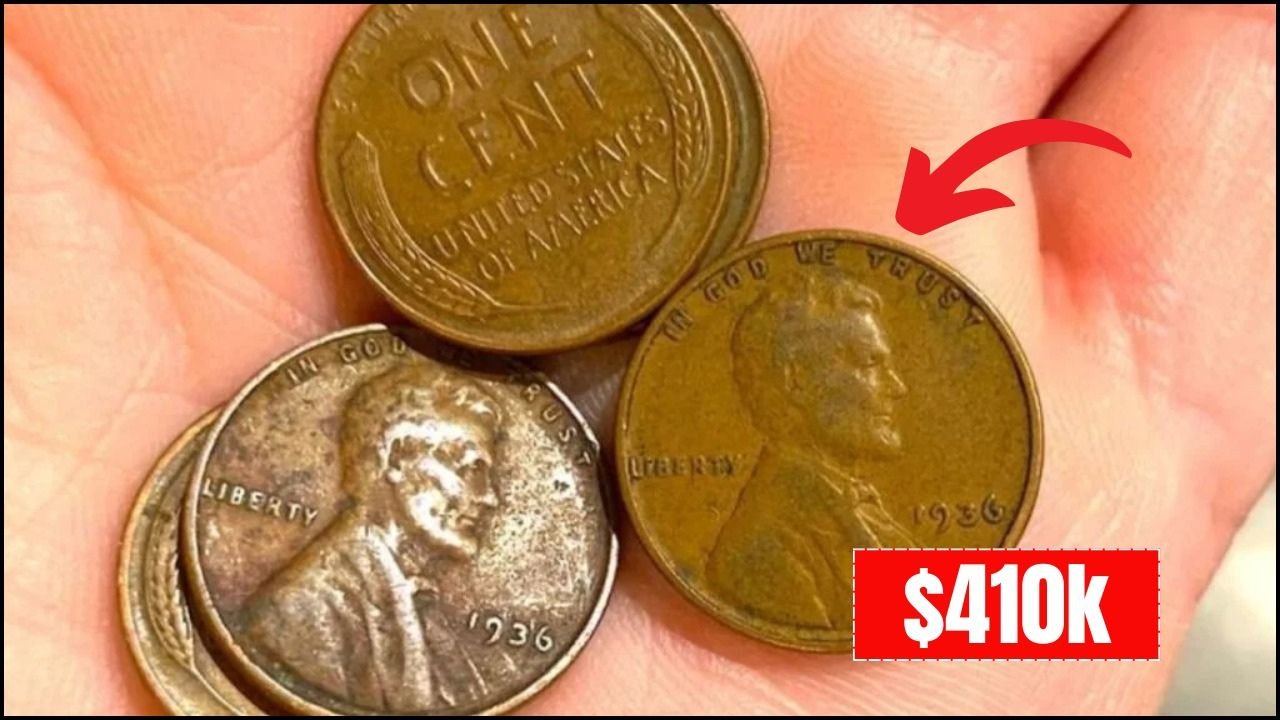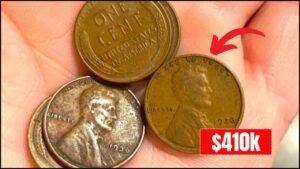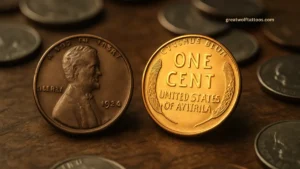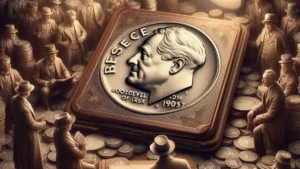Could a penny in your pocket be worth millions? For coin enthusiasts across the USA, the Lincoln Wheat Penny is more than just loose change—it’s a potential goldmine. Some of these coins, minted over a century ago, have sold for as much as $5.28 million due to rare minting errors or limited releases. Whether you’re sorting through a jar of old coins or just curious, this guide will help you spot a valuable Lincoln Wheat Penny and join the thrilling hunt for hidden treasure.
What Is the Lincoln Wheat Penny?
The Lincoln Wheat Penny, often called the “Wheatie,” debuted in 1909 to honor Abraham Lincoln’s 100th birthday. Designed by Victor D. Brenner, it was the first U.S. coin to feature a president’s portrait, making it a historic collectible. Its iconic wheat stalk design on the reverse gave it its nickname and enduring appeal.
While most Wheat Pennies, produced until 1958, are worth just a few cents, certain rare editions—like those with minting errors or from specific years—can fetch astronomical prices. The possibility of finding one in everyday change keeps collectors and casual enthusiasts hooked.
A Snapshot of the Lincoln Wheat Penny
- First Minted: 1909, celebrating Lincoln’s centennial.
- Design: Lincoln’s portrait on the front, wheat stalks on the back.
- Mint Locations: Philadelphia (no mint mark), Denver (“D”), San Francisco (“S”).
- End of Production: Replaced in 1959 by the Lincoln Memorial penny.
The Million-Dollar Pennies: What Makes Them So Valuable?
Some Lincoln Wheat Pennies are legendary for their rarity and historical significance. The most famous is the 1943 Copper Penny, a wartime error coin that could be worth millions. During World War II, the U.S. Mint used zinc-coated steel to save copper, but a few copper blanks were mistakenly struck in 1943, creating one of the rarest coins in history.
Another gem is the 1909-S V.D.B. Penny, minted in San Francisco with Victor D. Brenner’s initials on the reverse. With limited production, it’s a collector’s dream. Other notable rarities include the 1922 No D Penny and the 1955 Double Die Penny, each with unique errors that drive their value sky-high.
Top Valuable Lincoln Wheat Pennies
| Coin | Key Feature | Estimated Value |
|---|---|---|
| 1943 Copper Penny | Copper instead of steel during WWII | Up to $5.28M |
| 1909-S V.D.B. Penny | Limited San Francisco mint with initials | Up to $250K |
| 1922 No D Penny | Missing Denver mint mark | Up to $100K |
| 1955 Double Die Penny | Distinct double image error | Up to $50K |
| 1914-D Penny | Low mintage from Denver | Up to $40K |
Could a Million-Dollar Penny Be in Your Pocket?
Believe it or not, rare Lincoln Wheat Pennies could still be hiding in everyday places—coin jars, old wallets, or family heirlooms. Because these coins look similar to common pennies, they’re often overlooked. Stories of valuable coins found at yard sales or in forgotten collections fuel the excitement of the hunt.
Where to Search for Rare Pennies
- Loose Change: Check coins from cash transactions or tip jars.
- Inherited Collections: Look through old coin rolls or family keepsakes.
- Thrift Stores: Bargain bins at flea markets might hold surprises.
The thrill of discovering a life-changing coin in your change jar is what makes coin collecting so addictive.
How to Identify a Rare Lincoln Wheat Penny
Spotting a valuable Wheat Penny requires a keen eye and a few simple tools. Here’s how to check if your penny is a hidden treasure:
- Examine the Date and Mint Mark: Look for rare years like 1943 or 1909-S. Mint marks (“D” or “S”) are under the date.
- Check for Errors: Look for double images (like the 1955 Double Die) or missing mint marks (like the 1922 No D).
- Test the Material: For 1943 pennies, use a magnet—copper pennies won’t stick, unlike common steel ones.
- Assess Condition: Coins in better condition are worth more, but never clean them, as it reduces value.
If you think you’ve found a rare penny, have it authenticated by the Professional Coin Grading Service (PCGS) or Numismatic Guaranty Company (NGC). These services can verify authenticity and grade the coin’s condition, which significantly impacts its worth.
Tips for Preserving Your Pennies
| Storage Method | Benefits | Considerations |
|---|---|---|
| Coin Albums | Organized, easy to view | Use for less valuable coins |
| Coin Capsules | Superior protection | Best for high-value pennies |
| Acid-Free Envelopes | Prevents corrosion | Pair with other storage methods |
| Safe Deposit Box | Maximum security | Ideal for rarest coins |
Why Collect Lincoln Wheat Pennies?
Beyond the potential for profit, collecting Wheat Pennies offers a unique blend of history, excitement, and investment potential. These coins are tangible pieces of America’s past, tied to events like World War II and the Great Depression. Their value often appreciates over time, making them a smart addition to a diversified portfolio.
Benefits of Coin Collecting
- Historical Connection: Own a piece of U.S. history.
- Investment Potential: Rare coins often increase in value.
- Global Appeal: Collectors worldwide seek these pennies.
- Personal Enjoyment: The thrill of the hunt is unmatched.
Common Mistakes to Avoid
New collectors can make costly errors. Here’s how to protect your coins and investment:
- Avoid Cleaning: Cleaning damages coins and lowers their value.
- Don’t Skip Authentication: Always verify with PCGS or NGC to avoid fakes.
- Store Properly: Poor storage can degrade coins over time.
- Research Before Buying: Overpaying is easy without market knowledge.
FAQs About Lincoln Wheat Pennies
What Makes a Lincoln Wheat Penny Valuable?
Rare dates, mint marks, and errors like the 1943 copper penny or 1955 Double Die increase value.
How Can I Tell If My Penny Is Rare?
Check the date, mint mark, and condition. Consult a professional for authentication.
Where Should I Get My Coin Authenticated?
Use trusted services like PCGS or NGC for accurate grading.
Can I Clean My Penny to Check Its Value?
No, cleaning can ruin the coin’s surface and reduce its worth.
Start Your Treasure Hunt Today
The Lincoln Wheat Penny is proof that small change can lead to big rewards. From the million-dollar 1943 Copper Penny to the coveted 1909-S V.D.B., these coins turn everyday moments into treasure hunts. Next time you empty your pockets or dig through an old coin jar, take a closer look—you might just find a penny worth a fortune. Grab a magnifying glass and start hunting today!




